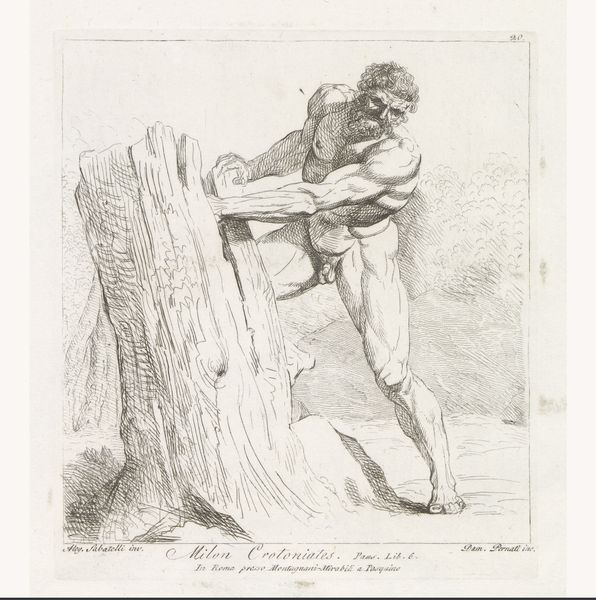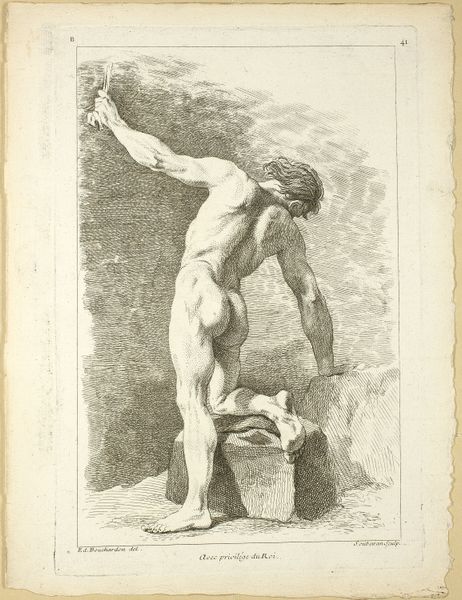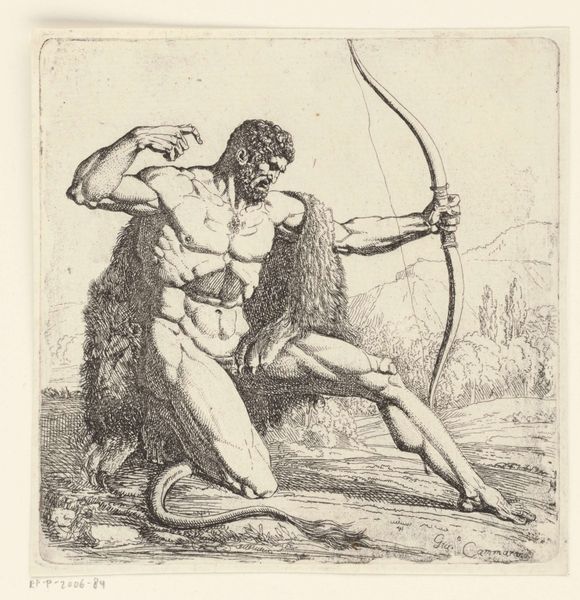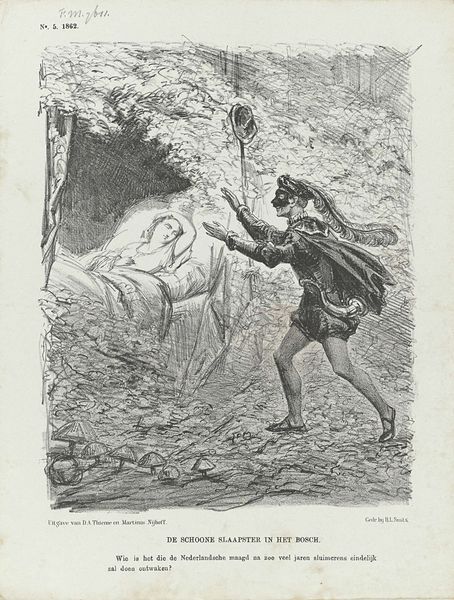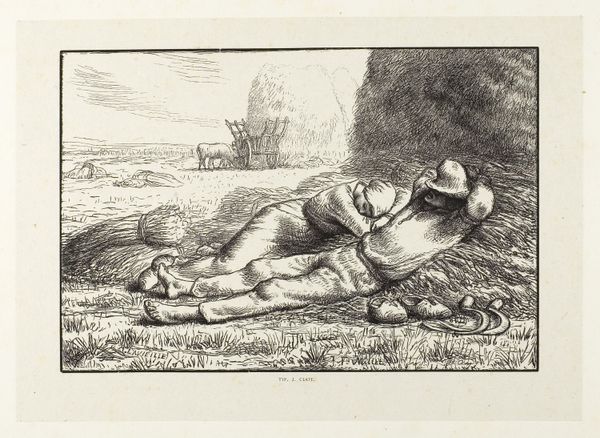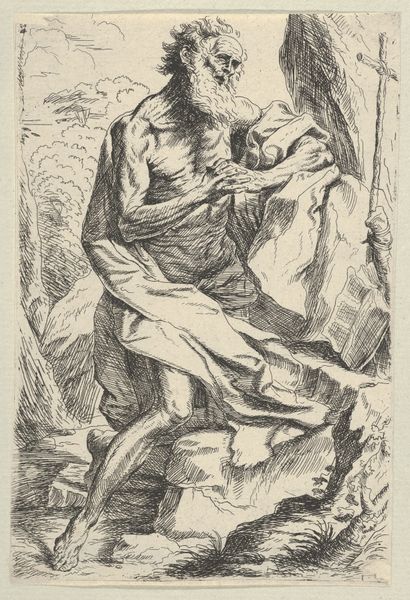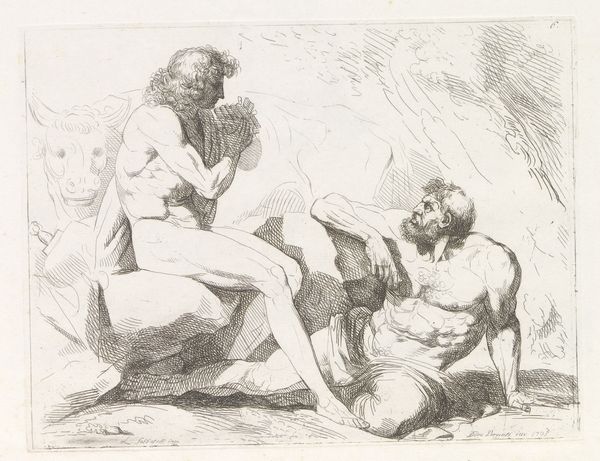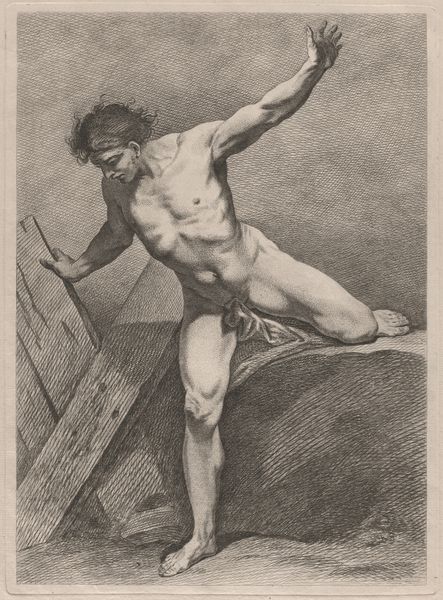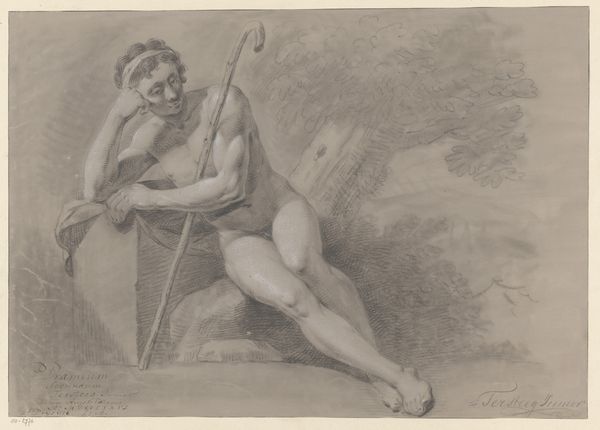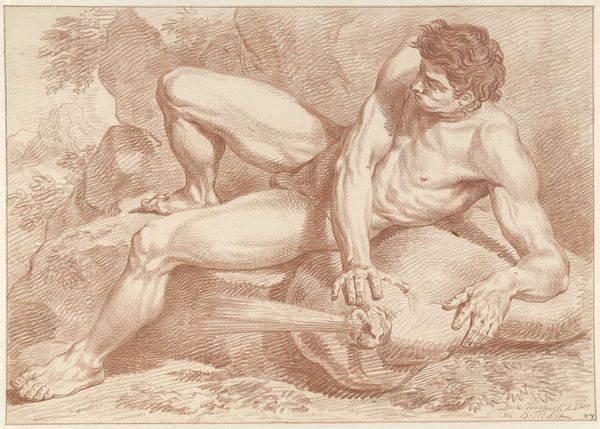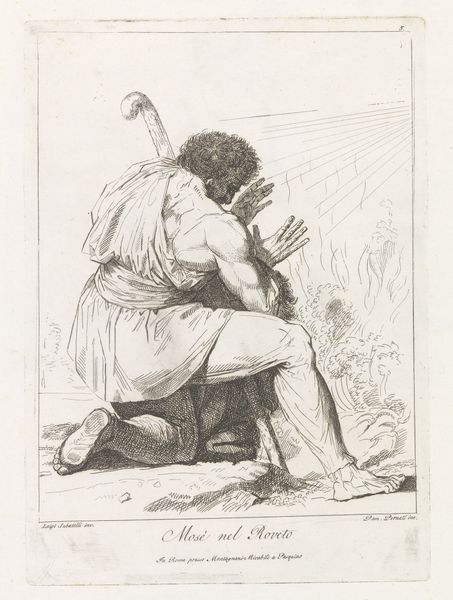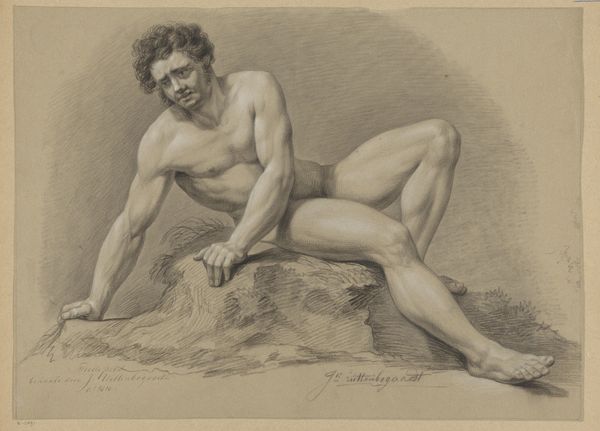
drawing, ink, engraving
#
drawing
#
neoclacissism
#
pencil sketch
#
landscape
#
figuration
#
ink
#
pencil work
#
history-painting
#
engraving
Dimensions: height 164 mm, width 221 mm
Copyright: Rijks Museum: Open Domain
Damiano Pernati created this etching, "Hercules Separating the Rocks Calpe and Abila (The Pillars of Hercules)," sometime between the late 18th and early 19th centuries. During this time, Hercules was a popular figure, embodying masculine strength and virtue. Here, Pernati depicts Hercules performing one of his twelve labors: separating the mountains Calpe and Abila, thus creating the Strait of Gibraltar. But let's think about the implications of this powerful, virile male figure forcibly dividing the landscape. What does it mean to see nature as something to be conquered, reshaped according to the will of a (male) hero? Look at the tension in Hercules' muscles, the way he strains against the rocks. There's a violence here, an assertion of dominance. It makes me wonder: whose stories get told, whose bodies get celebrated, and at what cost? This image is an echo of larger cultural narratives about power, gender, and our relationship to the natural world.
Comments
No comments
Be the first to comment and join the conversation on the ultimate creative platform.
